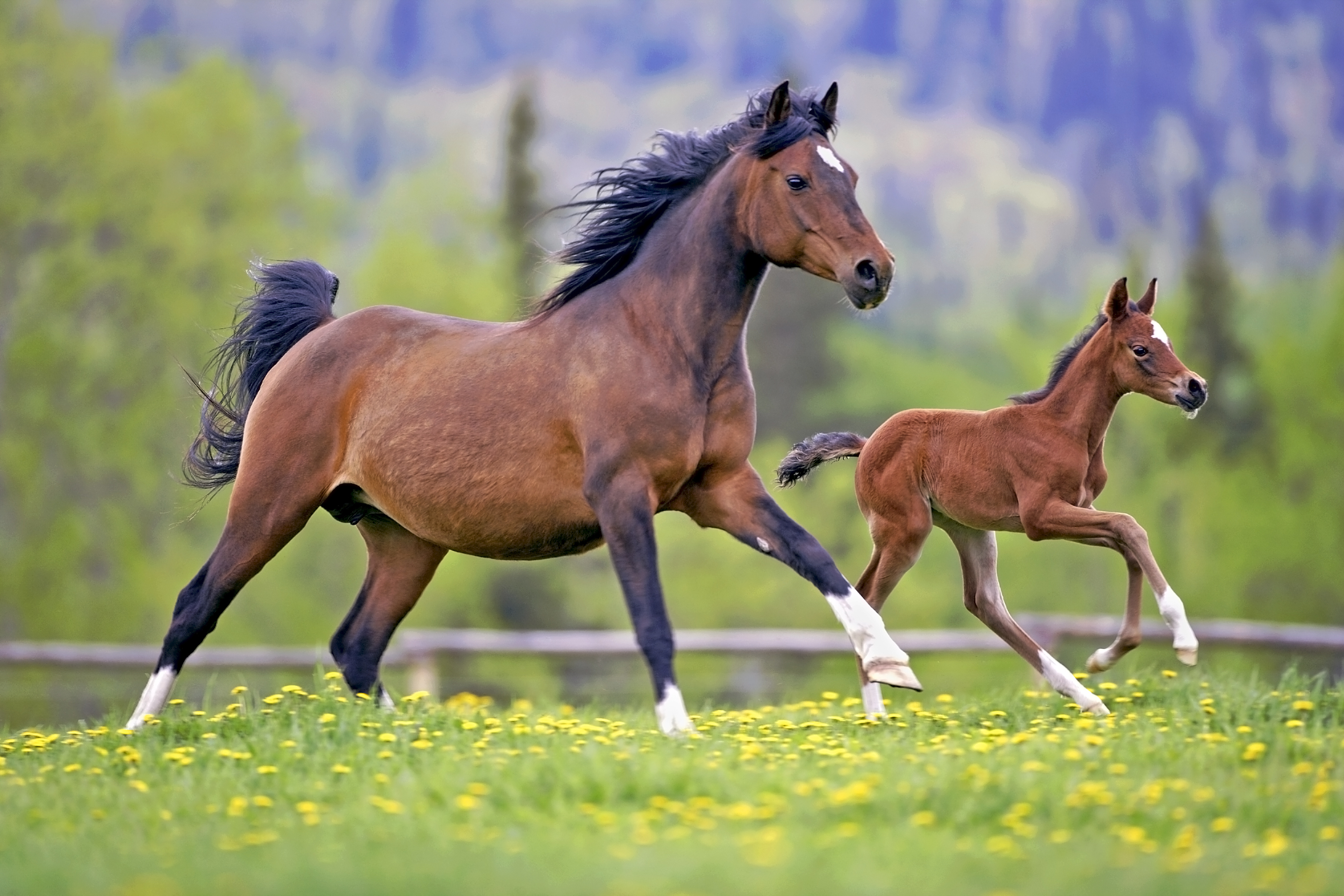A Dutch study suggests that restricting the exercise of foals during their first few months of life puts them at greater risk for developing cartilage defects that persist for a lifetime.

The study, performed at Utrecht University, followed 43 Dutch Warmblood foals from the time they were one week old until they were weaned. The foals were divided into three groups: One group was continuously confined in 12-foot by 13-foot box stalls; the second group was kept in similar box stalls but was exercised daily with an increasing number of sprints; and the third group of youngsters were on pasture 24 hours a day and allowed free-choice exercise. All of the foals remained with their dams.
At the end of a five-month period, bone, cartilage and muscle and tendon samples were taken from various locations on 24 foals, eight foals from each group. The remaining 19 youngsters were placed in box stalls with access to a paddock and allowed to exercise at will. Six months later samples were taken from those horses.
When samples were compared, the researchers found significant differences between 5-month-old foals who were exercised – either through sprints or turnout – and those who were not.
“In all cases, a lack of exercise led to a delay in tissue maturation,” says Rene van Weeren, DVM, PhD, who headed the study. “Specifically, we found differences in bone density along with tendon, muscle and cartilage composition.”
When researchers later compared samples from the 5-month-old and 11-month-old youngsters, they found evidence that subsequent exercise can help a foal with developmental delays make up for many deficits–with one important exception: “The window during which recovery is possible closes very early when it comes to collagen, which gives the cartilage its strength,” says van Weeren. “The result is that these horse may have less resistance to injury and be more prone to develop chronic, debilitating disorders such as osteoarthritis or degenerative joint disease later in life.”
The data also indicate that free-choice exercise is preferable to forced activity when it comes to growing joints. Foals who were asked for daily sprints for five months formed cartilage that was less able to regenerate than any other group, including foals who were not exercised at all. “We interpreted this as kind of an ‘exhaustion’ due to the exercise regimen the foals had undergone from birth to five months,” says van Weeren.
This article first appeared EQUUS magazine.
Don’t miss out! With the free weekly EQUUS newsletter, you’ll get the latest horse health information delivered right to your in basket! If you’re not already receiving the EQUUS newsletter, click here to sign up. It’s *free*!








